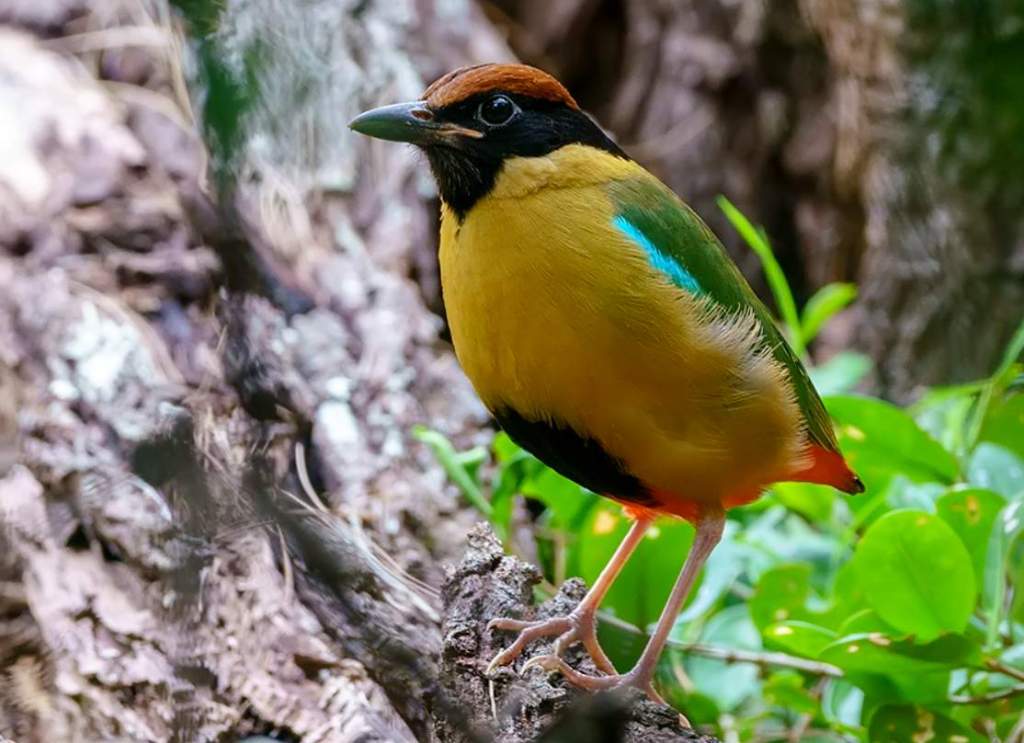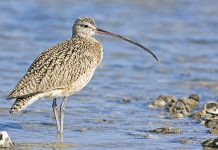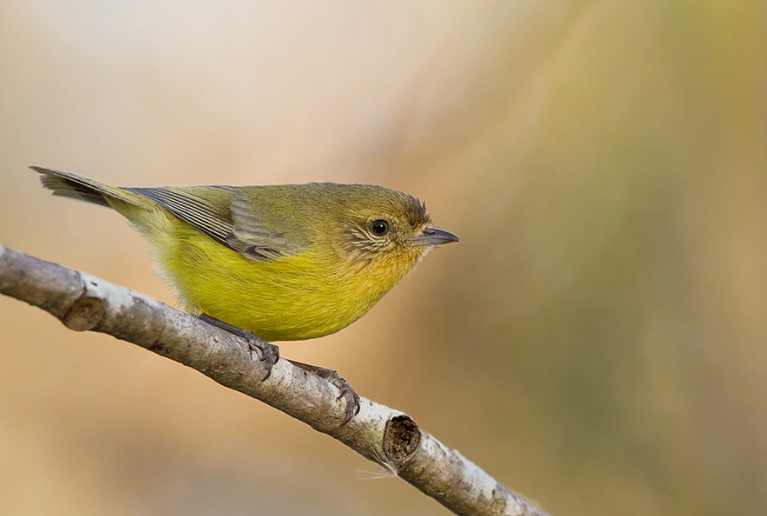Family: A noisy pitta (Pitta versicolor) belongs to the family Pittidae.
Habitat: Pittas, or Jewel-Thrushes, are some of the world’s brightest-colored birds. Noisy Pittas are one of the biggest, with a dumpy shape, short tail, rounded wings, and long legs. All of these characteristics are suitable for life on the ground. Most Noisy Pittas live alone or in pairs dispersed throughout rainforest floors.
It is rare to see them except when they are nesting, as they are quiet and secretive. Forest trails and clearing edges sometimes present a tantalizing glimpse of them before they disappear. The birds also whistle loudly during the breeding season, particularly during territorial defense. A bird’s advertising call is generally given from a tree perch up to 8-10 meters above the ground, where it also roosts.
The breeding season coincides with the start of the monsoon rains, so continuous calls are regarded as an omen of rain in some areas. It appears that the birds may migrate after raising young, and leaving an area altogether, as evidenced by the contrast between noisy nesting calls and out-of-breeding silence.
Seasonal movement and local dispersal can be seen in the regular altitudinal shifts on the Atherton Tableland, as well as the stray appearance of pittas on Barrier Reef islands. In spite of this, the consistent increase in body size of pittas from north to south indicates that local populations are fairly sedentary. Despite being present, they may not be heard or seen.

Identification: Both sexes are similar. The head and throat are black, with a broad chestnut stripe over each eye meeting behind the crown. The back and wings are glistening mid-green. The shoulder stripe and rump are iridescent turquoise-blue; the outer flight feathers are black with a concealed white center bar. Breast and flanks are tan-buff. The center of the upper belly is black; and the center of the lower belly and crissum scarlet. The tail is black, narrowly ripped green. The eyes are dark brown. The bill is black. The feet are pink or pink-brown. The immature bird is generally duller than adults, with upper markings less pronounced and black and red on the belly absent or slight.
Behavior: It is not known how Noisy Pittas display their behavior. It has been observed that captive birds perform a passive threat as a form of courtship display. As the bird approached, it turned its back on the danger and crouched slightly. After peering over its shoulder, it spread its wings and cocked its tail, revealing its white ‘windows,’ which contrasted with its bright colors. A position like this would be held for four to twenty seconds.
As with some other pittas, the Noisy Pitta makes an unusual addition to its bulky nest: a ‘doormat’ made of moist mammal dung. Also, it carries dung into its nest on its feet, staining the eggs. Eggs are incubated by both parents in turn and cannot be discouraged from doing so. It has been reported that one pair tolerated the felling of a tree at whose base they were nesting.
Vocalizations: Noisy pittas chirp most frequently in the morning with a secondary peak around midday. Noisy Pitta’s territorial call is a loud, chirping melodious whistle, resembling walk-to-work or want-a-watch, with the first note low and the last note, which is higher in pitch and drawn out. Usually repeated twice and followed by a pause, as if waiting for an answer. Also, a single, liquid, mournful keow, often at night and perhaps for contact.
Feed: When foraging alone or in pairs on the forest floor, the Noisy Pitta exhibits an upright posture, flicks its tail, and bobs its head. Hops about, turning over leaves and twigs in search of insects, woodlice, worms, snails, and other small creatures.
Fruit and berries are also eaten by it. Birds are particularly fond of snails as food, and they select special sites to separate snails from their shells. Pittas hold snails in their bills and repeatedly strike their shells against an anvil stone or a piece of wood until they crack open, allowing them to extract and consume their soft parts. With constant use, convenient anvils can become smooth with a heap of broken shells.
Nest & Breed: Nesting and breeding occur between October and January, and sometimes between August and March as well. The nest has a large, loosely constructed domed shape, 300 x 300 x 200 mm, with a 90 mm high entrance and a 150 mm long stage-like approach of animal dung. Usually found on or near the ground, between buttressed roots, in tree-trunk clefts, or on top of stumps; made of sticks, leaves, fronds, bark strips, roots, and moss; sometimes lined with decayed wood or other debris.
Eggs: They lay three to four eggs, rarely five, which are glossy, pearly white with varying amounts of dark brown, chestnut, and purple-grey blotches; rounded-oval, about 32 x 25 mm. Incubation by both the sexes. For an Asian species, 17 days of incubation have been recorded; Australian pittas are not known to incubate.
Distribution: This species is fairly common on the east coast of Australia south of the Hunter Valley.Infrequently south to Illawarra before extensive clearing at the turn of the century; occasionally south to Sydney area.There may be some movement within Australia and possibly to southern New Guinea.There are indications that most of the population is regionally based.
Races: There are two races: one from the north coast, New South Wales, to the Cairns-Cooktown area, Queensland, graded from large to medium northward and frequently with black streaks in greenback; the other, restricted to the east coast of Cape York Peninsula and Torres Strait islands south of Mellwraith Range, is small without black dorsal streaks.
Similar species: Some authorities believe that the noisy pitta is conspecific with both the elegant pitta of Indonesia (Pitta elegans) and the rainbow pitta of the Northern Territory (Pitta iris). The black-faced pitta (Pitta anerythra) of the Solomon Islands and these two species are usually considered to form a superspecies.
Alternative Names: This lovely bird is also known as Anvil-bird, Buff-breasted Pitta, and Dragoon-bird.
Size: Noisy Pitta is about 175-200 mm long. Males weigh 72–110 grams and females 72–129 grams.
Status: Least concern
Class: Aves
Order: Passeriformes
Genus: Pitta
Scientific name: Pitta versicolor
Read More – Red-bellied Pitta







